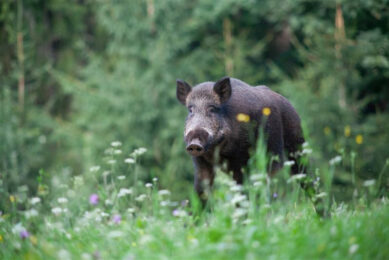Feed Microbiology 101
I am not aware of any college in the USA or Europe offering such course, but in my opinion, they ought to because of the enhanced importance this topic is discussed with in technical and regulatory circles. Simply knowing that feed and ingredients are contaminated or not is no longer good enough as we need both quantitative and qualitative means of measuring the microbiological load of these materials.
The presence of microorganisms, such as enterobacteria and salmonella, and their concentration is indicative of possible diseases been transferred from feed to animals. Such diseases cause a tremendous amount of financial losses worldwide and yet, their prevention is quite simple if elusive due to lack of understanding of what needs to be done. Sometimes, it is as easy as knowing what to look for in feed and ingredients!
A Spanish private company (Adiveter SL) recently published a lengthy report concerning the prevalence of microbial contamination in complete feeds and raw materials. The first and most striking result concerns the comparison between meal and pelleted feed. From the almost 250 tests conducted in pelleted feed, only 10 samples were found contaminated, and they were all contaminated with enterobacteria other than E.coli. None were infected with C.perfingens, E.coli, live molds, or salmonella. In contrast, about 450 samples of complete feed in meal form, yielded 12% contaminated with E.coli, 43% contaminated with enterobacteria, 19% contaminated with live molds (capable of producing mycotoxins during storage), and only 3% with salmonella. Of course, these numbers are most likely different in various parts of the world, but they do indicate the fact that pelleted feeds are safer than untreated feed. This is, of course, due to the thermal processing during pelleting and assuming re-contamination during transport, storage, and handling is avoided, pelleted feed requires little if any intervention to remain pathogen free.
The other interesting part of this report regards the source of these microorganisms as relates to the raw materials from which feeds were made. We will discuss here only E.coli, molds, and salmonella as these two are of the highest importance for pig feed at the moment. Not surprisingly, cereals were relatively free of bacteria (less than 3% of samples tested), but they were quite infected with molds (21%). Cereal by-products were very high in E.coli (41%) and relatively free of salmonella (1%), with an intermediate level of molds (7%). Protein sources were infected mostly with E.coli (6%) and salmonella (4%), whereas fiber sources were having a relatively low level of molds (4%). Proteins of animal source were not part of this report, but it is well known fact that ingredients such as fish meal and meat meal are often infected with salmonella and E.coli.
With the new year upon us, it is good time to have a new resolution regarding feed quality, especially at farm level. Besides testing for protein, fiber, ash, and other such components of feed and ingredient quality aspects, it is also important to add a couple tests regarding microbiological quality. As such, I would suggest to begin with E.coli and salmonella when feeds are in meal form and when ingredients of animal origin are used, again in complete feeds in meal form. Apart from that, I would strongly advice towards visiting with your local microbiology laboratory to give you an idea of what contaminants are prevalent in your area and then act accordingly.











